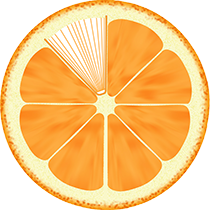|
Vascular ultrasound represents one of the first success-
ful applications of Doppler ultrasound to clinical
medicine, and it has evolved to be a versatile diagnos-
tic test for the assessment of both arterial and venous
disease. Given the anatomic extent and potential com-
plexities of arterial and venous trees and the inherent
requirements of ultrasound imaging, vascular ultra-
sound has its limitations, but when approached prop-
erly and formally (with thorough and structured
protocols), it is a very useful diagnostic tool. Attention
to technique and to detail and an attempt to have the
greatest knowledge possible of native anatomy and its
variants, vascular diseases and their permutations, and
interventional and surgical techniques maximize the
yield of vascular ultrasound.
The historic standard of comparison of vascular
ultrasound has been conventional angiography/
venography. With the progress and developments of
computed tomography (CT) angiography and mag-
netic resonance (MR) angiography, both of which also
have as their basis of comparison conventional angi-
ography, the respective roles of vascular ultrasound,
CT angiography, and MR angiography are evolving
and are slowly being defined. Each modality has its
strengths and weaknesses. CT and MR angiography
are anatomic tests; vascular ultrasound is both a
physiologic and an anatomic test. Vascular ultrasound
is still currently the pre-eminent noninvasive test of
venous disease; CT venography is less competitive.
CT angiography is certainly a rising contributor to the
assessment of arterial disease, but vascular ultrasound
remains a radiation-free means to initially assess arte-
rial disease.
This book is our attempt to summarize and provide
our experience, principles, and approach to the appli-
cation of vascular ultrasound to the arterial and
venous vascular fields, and also a platform from which
to stalwartly encourage structured and thorough tech-
nique and protocol, as well as awareness of disease
permutations.
It is our hope that this book will prove useful to those
who are dedicated to providing care to patients through
the clinical application of vascular ultrasound.
Acknowledgments. We acknowledge with appreci-
ation Adrien Boutin, Vern M. Campbell, Tony M.
Chou, Melma J. Evangelista, Allan J. Lossing,
Krishnankutty Sudhir, Inga Tomas, William S. Tucker,
and contributors Junya Ako, Joe Chauvapun, George
E. Kopchok, Katsuhisa Waseda, and Rodney A. White.
|
